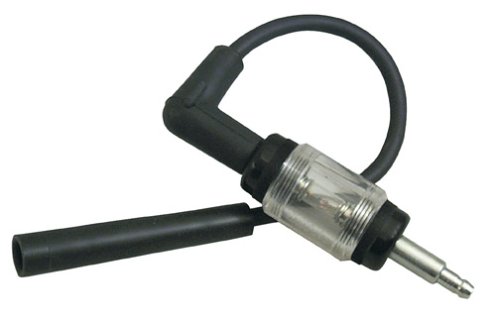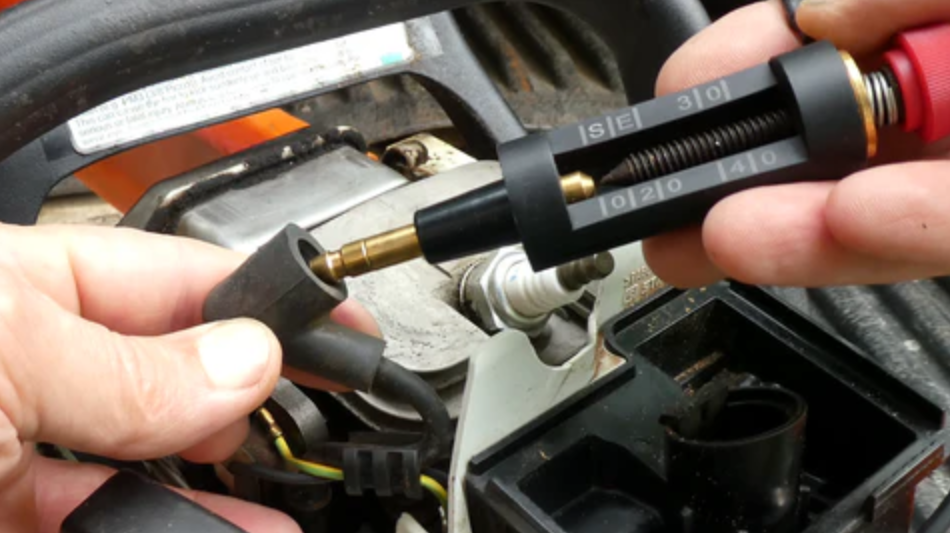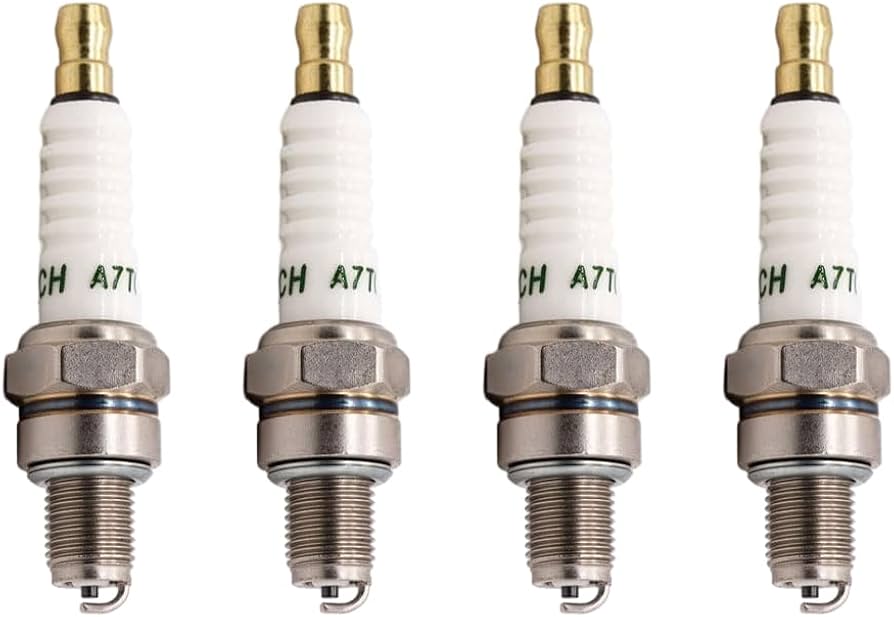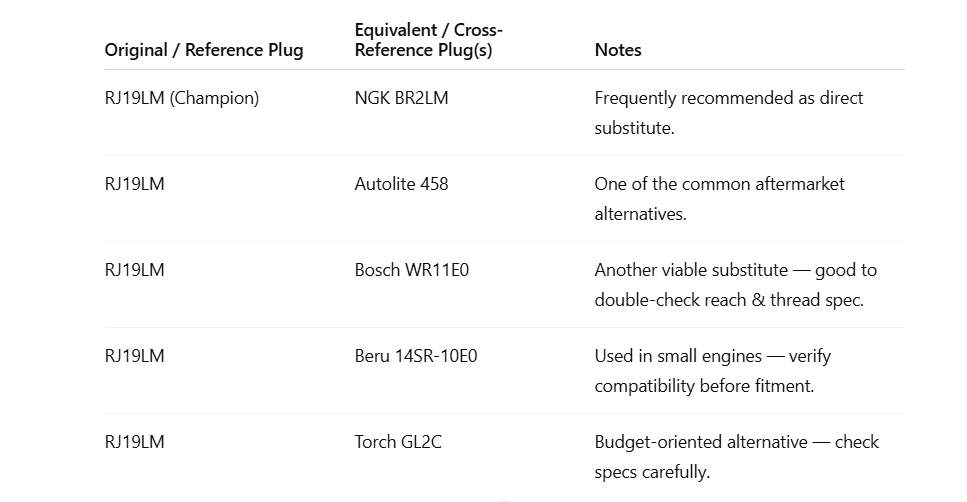To use a spark plug tester, attach it to the spark plug wire and hold it against the engine. Crank the engine and check for a strong, consistent spark to diagnose ignition issues.
If your vehicle is idling roughly, sputtering, choking at starting, or losing power, then there, is most likely, an issue with the spark plugs. One of the most reliable methods of diagnosing spark plug problems is through the use of a spark plug tester. Although small, this tool is very significant, as it determines the condition of the spark plugs in an engine, and consequently the engine’s performance.
This blog is intended to be a practical textbook, and therefore, will be dissecting the spark plug tester, its types, and most importantly step by step approach of how to use them. We will also answer a number of troubleshooting and other relevant queries in order to make you prepared for likely problems.

Contents
What is a spark plug tester?
A spark plug tester is a tool which determines whether spark plugs are functioning withing set parameters. Spark plugs perform the crucial function of igniting the air fuel mix, within the engine’s combustion chamber. One could assume that the engine could start and even, run, but with great difficulty, and this would mean his spark plugs are broken, and as such would result in a significant decrease in fuel economy.
Measuring and diagnosing weak sparks in a plug and diagnosing problems with no sparks or sparks, or intermittent, can be done with a spark plug tester. The engine and spark plugs need to be checked regularly to avoid performance problems.
Why Should You Use a Spark Plug Tester?
Diagnostic issues with the other vehicle systems and rest of the systems of the vehicle that are not functioning up to their fullest potential are dependant of spark plug testers. Diagnostics of ignition systems in motor vehicles consider spark plug testers to be one of the most valuable tools.
Accurate Diagnosis: The engine calmness or “rough” idles and misfires issues is an “on the table” or on the clasp and for diagnosing the engine when confirming the accuracy of the spark plugs is needed proposes for a lot of certainty.
Preventative Maintenance: The problems that are able to be resolved easily before they turn into huge obstacles caused by the problems are resolved due to the plugs and other components and systems being monitored and regularly maintained.
Improve Engine Performance: The spark plugs are checked to see if the vehicle costs are lowered, and if they are optimally saved. It also improves the engine operations to improve the vehicles fuel efficiency and engine lifespan.
Delays in diagnosis and treatment regarding your vehicle’s spark plugs can lead to costly repairs on your engine and wasting funds in places that were not part of your budget. Knowing the problem early on and having the right measures can help avoid spending money unnecessarily.
Types of Spark Plug Testers
Before we go ahead and talk about spark plug testers, there are different types of tools and each of them performs different spark plug related functions, hence we do not talk about tools in isolation with spark plugs.
1. Inline Spark Plug Tester
The spark plug tester is the very first spark plug tester and also the one that is the most commonly used for routine car servicing.
The spark plug is used in conjunction with the wire, and the spark plug is positioned in line for touchless sparking ease. If the engine is weak, or there’s no sparking, the spark plug and ignition system are functioning incorrectly.
How it works: An inline tester functions with: inline mini-tester and the ignition system. While the engine’s working, the inline system shows a weak or hidden ignition, and the engine is operational.
Best for: Locations trying to diagnose and solve minor issues with spark plugs and gasoline powered engines such as cars, motorcycles, and trucks, will find this tool handy.
Pros: This tool can be used as a standalone unit. Diagnostics can be performed with the spark plug still secured to the engine, as the unit can be placed inline with the spark plug wire.
Cons: In some cases, this tool may completely fail to diagnose the issue at hand. Other times, it may struggle with more sophisticated analysis pertaining to basic coil ignition problems, or coil-on-plug issues.
2. Adjustable Spark Plug Tester
Adjustable spark plug testers are more applicable to ignition systems with an ability to adjust the distance between terminals. This equipment is more flexible, as the adjustments can be made to satisfy varying conditions.
How it works: A gap adjusting device allows the user to set the tool according to specific needs. It is also the case that the user can optimize tester settings based on specific engine criteria, such as best performance, that may reside within a minimum and maximum gap. The uppermost performance status of an ignition system achieves a spark.
Best for: This tool does best at simulating conditions that are hypothetical and require special setup. It best suited for fine-tuned advanced diagnostics.
Pros: An extra benefit for a tester is the ease of grasping behavioral patterns which is enabled by the additional adjustment.
Cons: For some other testers, this is not the case. It is harder, more expensive, and more complicated to do.
3. Testing Using Coil-On-Plug Technology
Testers that use coil-on-plug technology are automotive tools that diagnose vehicles with one ignition coil for every spark coil. These testers diagnose ignition coils without delay to understand if the needed spark is being generated.
How it works: The direct testing is done with the help of spark testers that are visually able to confirm the appearance of the electrical spark. When an electrical spark is present, and it is weak (and worse, absent) it indicates that the ignition coil (or ignition system) is faulty.
Best for: In modern vehicles, especially cars and trucks built in the last two decades, coil-on-plug systems are far more prevalent.
Pros: These testers are considered more modern systems, with a high degree of specificity and accuracy in diagnosing the system.
Cons: As a vehicle ages, or the more rudimentary an ignition system is, the more likely this tester’s accuracy and appropriateness will decline.
When Using a Spark Plug Tester: Step by Step Guide
The purpose of this guide is to assist the user in understanding the steps involved with using this specific type of spark plug tester in order to reduce unnecessary costs associated with the spark plug.
Step 1: Collect Needed Tools
The first step is taking inventory of the needed equipment for the session.
• Spark Plug Tester: we suggest using inline testers with adjustable settings for the spark plug or the kind of work the engine will have to do.
• socket wrench with spark plug socket: the devices for unscrewing the spark plug.
• protective gloves with goggles: items for use to protect themselves from the naked electrical systems.
• Service manual of the vehicle: to remind oneself the values of spark plugs and the frequency of maintenance for the respective model.
• Spark Plug Gap Tool (optional): a tool for checking and adjusting the plug gap.
Step 2: Find the Spark Plugs
Check with your vehicle’s service manual and see if the spark plugs are situated on the engine block as is standard and what kind of ignition wires, if any, or coils are connected to them.
In some other vehicles, spark plugs can be positioned in some different areas and may even need the uninstalling of other systems of the engine like airfilter systems or the intake manifold.
This is also the area where certain cars, particularly those with Overhead Cam engines, tend to struggle the most. In this situation, components like the engine cover and air intake system will most likely have to be disassembled to reach the spark plugs.
Always make it a habit to ensure that the engine is switched off, and cooled down enough beforehand to eliminate possible hazards while you try to take off components like the spark plugs.
Step 3: Remove the Spark Plugs
The spark plug is removed and after the spark with the help of either the spark plug wire or the ignition coil. This is done by gentle twisting, and turning. Any sudden and violent movements will most likely damage or break the wire, or coil.
Spark Plug Wire: Using a gentle, yet firm quarter turn in the clockwise direction, you can pinpoint the narrow end of the spark plug wire and take it off.
Ignition Coil: In the case of a coil-on-plug setup, unclipping the ignition coil from the coil-on plug is what needs to be done.
Step 4: Attach the Spark Plug Tester
With respect to inline testers: “The inline spark plug tester is easily placed in between the spark plug wire and the spark plug. The wire end that plugs to the inline tester and the spark plug that is at the opposite ends must be connected properly.”
With respect to adjustable testers: “The adjustable spark plug tester is placed directly over the spark plug and is screwed to it. Then the spark plug wire or ignition coil is connected to the plug tester.”
Step 5: Root the Tester
Make sure the tester is held correctly. It should be close to fully grounded to the ‘C’ terminal. Most spark plug testers come with a grounding clip which is supposed to be attached to a cleen, unpainted, metallic place and then to the engine block. Grounding the tester allows you to check the spark’s intensity if the spark circuit is complete with the circuit.
Why Important: Operational clogging with inaccurate spark display failure is not good. In addition, grounding the tester is the only way to avoid worries while working beneath the electrical sparks.
Step 6: Start the Engine
In this step, all you have to do is start the engine. When the engine is running, you should pay attention to the tester part which is supposed to be the outlet on the spark side. When the engine is running, the tester should also be on and working while having sound and light indication of work.
What you should pay attention to: A complete ignition system should be able to produce a continuous signal of blue spark.
Step 7: Analyzing the Collected Data
The ignition system, together with the spark plug and the bright blue spark, which are constant, needs to be fired up in order to function.
Weak/No Spark
Dialing it down, the lack of spark or weak spark on the spark plug could come from issues on the plug, the wiring, or even an ignition coil.
Some of electronic ignition problems could cause the coil system weak. A replacement or repair needs to be conducted. A worse situation could be an malfunctioning spark coil.
Frequently Asked Questions
FAQs on Spark Plug Testers –
1. What is the time interval I need to observe between spark plug tests?
To set an interval between spark plug tests, one must consider and understand one statement. It is always best to have any problem solved before it appears. Try to make the spark plugs resistance test interval every twenty to thirty thousand miles. It is of equal importance to pay attention to the instructions given in the vehicle’s service manual.
2. Can I use a spark plug tester on any type of engine?
It is believed that spark plug testers work on most gas powered engines which include cars, motorcycles, and small engine equipment. The engine type that the tester can be used on depends on what type of spark plugs or coil-on-plug ignition systems are used.
3. Is using a spark plug tester safe?
When using spark plug testers, safety measures such as gloves, goggles, ensuring that the engine is off and the spark plug tester is grounded, and the electrical components are well checked should be observed.
4. Why is the light on the tester blinking?
Usually, a blinking light on the spark plug tester means the spark plug is firing and functioning correctly. A bright flashing light on the spark tester means the ignition system is functional.
5. Is it possible to test spark plugs without a tester?
Although when a spark plug is taken out, and the ignition coil is grounded, it is possible to check for spark, it is much safer and more accurate to use a tester.
Conclusion
The focus of this section is how an automotive scanner will help figure out what is wrong with an engine and perform what is called an automotive engine preliminary check. Assistance from a spark plug tester is required to check problems with the ignition system. This ignition system spark plug tester aids in the mitigation of the scope of vehicular engine problems.
It is not uncommon to find a vehicle with rough idling and poor fuel economy and to assume the two happen together, but a spark plug tester will help with the coherence of the engine ignition system and engine efficiency. This is something that I’m going to describe, explain step by step, and try to guide you on how to self service the vehicle and when doing so, keep the vehicle in the best possible shape.





